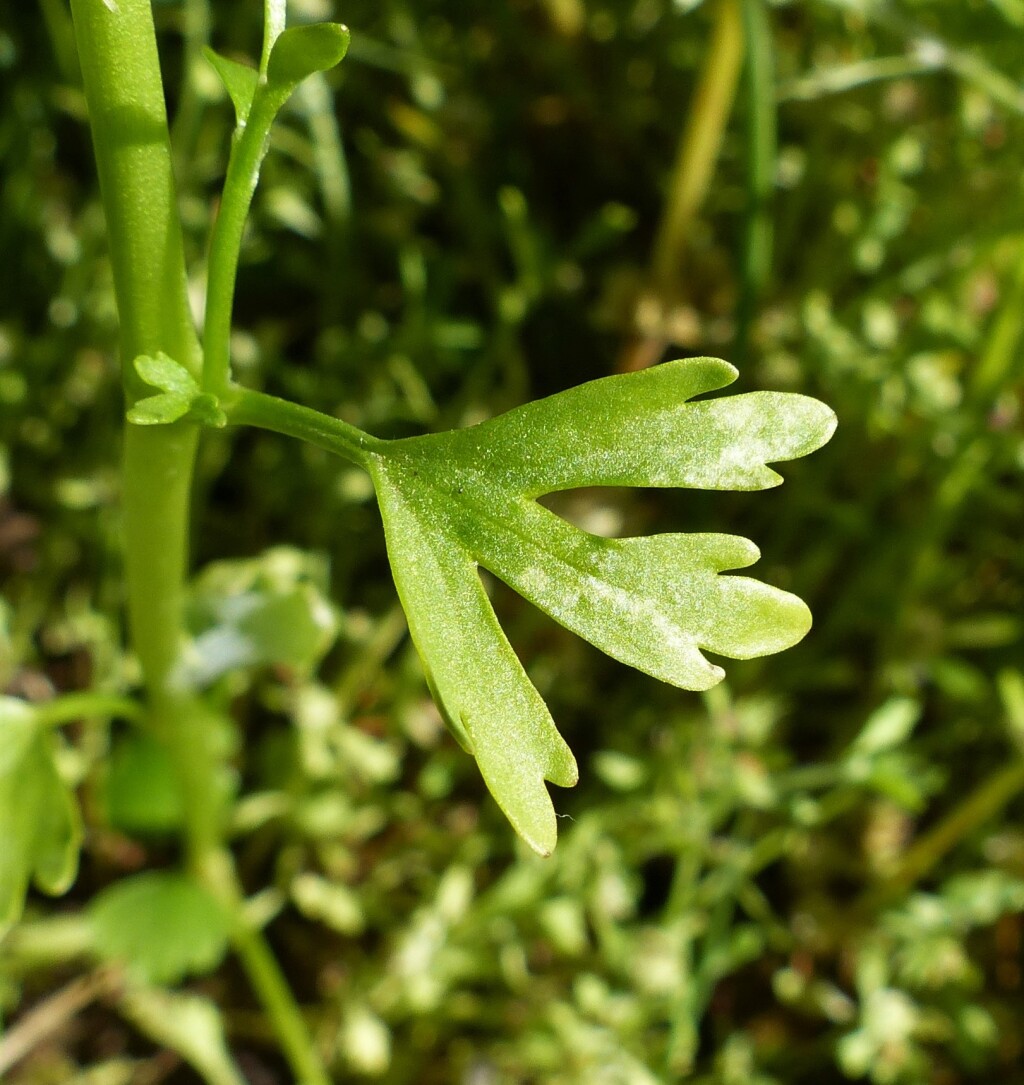Ranunculus sceleratus subsp. sceleratus
Celery ButtercupErect, semi-aquatic, somewhat fleshy glabrous or sparsely pilose annual to c. 80 cm high. Leaves glossy, basal and cauline; lower leaves with petioles to c. 25 cm long; lamina deeply crenate to 3-lobed or trifoliolate, mostly 2–6 cm long, 3–10 cm wide, the segments sometimes again 3-lobed. Flowers usually numerous in loose terminal cymes or dichasia; sepals 5, obovate, 2–4 mm long, pilose on back, reflexed; petals usually 5, obovate to spathulate, subequal to sepals, yellow, glossy; nectary almost circular, pit-like, with a narrow marginal rim, c. 0.5 mm diam.; stamens usually c. 20. Achenes often c. 100 or more, in an elongate head, elliptic or c. semicircular, c. 1 mm long, the convex faces glabrous, faintly transversely ridged; beak minute; receptacle sparsely pilose. Flowers Sep.–Dec.
MuM, Wim, GleP, VVP, VRiv, RobP, MuF, GipP, OtP, Gold, CVU, NIS, EGL, EGU, HSF, HNF. Also naturalised SA, Qld, NSW, ACT. Occurs in drains, swamps and shallow lakes chiefly near the Murray River between Albury and Swan Hill, scattered but locally plentiful in the south (e.g. Lara, Heidelberg, Bairnsdale, Orbost).
Ranunculus sceleratus subsp. reptabundus (Rupr.) Hulten differs from the nominate subspecies in having apetalous flowers, while Ranunculus sceleratus subsp. multifidus (Nutt. ex Torr. & A.Gray) Hulten differs from the nominate subspecies by its achenes that are not faintly transversely ridged. These subspecies are native to northern Russia and north western North America respectively and have not been recorded in Australia.
Poisonous to stock.
Walsh, N.G. (1996). Ranunculaceae. In: Walsh, N.G.; Entwisle, T.J., Flora of Victoria Vol. 3, Dicotyledons Winteraceae to Myrtaceae, pp. 35–63. Inkata Press, Melbourne.
 Spinning
Spinning

